How My Children Learn to Read
A peek into reading instruction in our home (Quick Book Notes #11)
Dear Friends,
There are so many ways to teach a child to read. Many children even teach themselves. In some ways, the process can seem a mystery — sometimes it just happens, or something works or does not work for a particular child and we are not sure why.
It’s a beautiful, magical mystery, really. That’s what always strikes me at the moment when reading “clicks” for a child — what a beautiful, magical thing.
But of course, literacy instruction and the word-related processes of the brain are also under continual study by experts in these fields. Parents, too, often learn a great deal about how these things work through a combination of experience, observation, and reading as their own children grow.
The mystery factor means, however, that parents who are new to homeschooling or who need to supplement a schoolchild’s reading instruction at home often don’t know where to start. Reading is so important that the thought that a parent might somehow fail at teaching reading is very troubling. So I thought I’d offer a little bit of solidarity, reassurance, and practical help today by means of sharing the personal story of how my three older children have learned to read (my fourth child is only just beginning).
Hint: it is a bit mysterious, but it is not as daunting as you might think.
When I first found myself confronted with a child who was approaching reading age, I began as many parents do: with the alphabet song, and sort of casually teaching the sounds of the letters, and showing her how to read and write her own name. But as my daughter reached school age, I looked for a book or curriculum to help us along.
First I tried a “whole language” approach. (I don’t remember the name of the book I used.)
Ha!
Maybe the whole language approach would work with your child, but it didn’t work with mine, that’s for sure. And indeed, there is a great deal of evidence that phonics-based literacy instruction usually works better.
On the recommendation of several friends, I turned next to this highly popular book:
It worked (and still works) for many of my friends. It’s popular for a reason. But it didn’t work for us.
Why? For a number of reasons. Partly because it doesn’t use the same symbols as regular reading and writing, which threw us off, I think. And partly because it tells the parent exactly what to say and do at a very minute level and I, having my own opinions, don’t much like this kind of curriculum. A therapist once told me bluntly that “you don’t like being told what to do,” which I suppose is true, but I also just much prefer flexible resources over strict ones, so that I can easily adjust to what seems to be best for my own students. I find it frustrating when something is not working but deviating from the instructions makes it difficult to use the curriculum for which I’ve just paid a bunch of money.
So, having learned an invaluable little lesson in my homeschooling style — “boxed” curricula generally just aren’t a good fit for me and my kids — I then tried putting my kid in a Montessori school three mornings a week, where she decided that she hated the famous (and again, they work for many) “Bob books” because there were not many girls in them, according to her. And they weren’t colorful.
(I’m not knocking Montessori — really — but no, it did not work for my child, at least in that particular setting. Are you sensing a theme here?)
On we marched in our homeschooling, then, and eventually, after we discovered some vision problems that were stalling my daughter’s emerging literacy, a tutor figured out that she needed colorful books that were big and bright.
Enter the regrettably out-of-print HBJ Bookmark readers, with the wonderful “Sun Up” as its first volume. I bought the lot of them used (find Sun Up here!) and never looked back. With a little therapy for her eyes and the help of the tutor as well as yours truly, my daughter was on her way and by age 8 was reading far above grade level. She is currently a reading powerhouse, and an outstanding writer to boot. I couldn’t be prouder of her.
Whew.
As so often happens, I learned a lot from teaching my eldest, and the experience of trying different things — and finding myself humbled when they didn’t work — taught me a great deal about myself, my teaching style, and my children as students. A lot of things did not work for me or for my eldest child.
Herein, perhaps, lies the key: we had to learn our own ways, and accept what worked and what didn’t for our children. You will, too, if you are open to the experience — even if it’s different from what has worked for me. Just as you grow as a parent as your children grow in years, so too you grow as a teacher as your children advance through their schooling.
You don’t have to know everything right from the beginning!
So with my subsequent children, I have taken an approach informed by my experience teaching my first. To wit:
At the age of 4, I have each child evaluated for eye problems such as convergence insufficiency, to make sure there is no need for prism glasses or therapy. Most children probably don’t need this evaluation, but these things can run in families.
In Kindergarten (or before, if the child is interested), we slowly begin to learn letters and sounds, primarily using a very simple phonics book, one that has stood the test of time over many, many decades:
Yes, that’s right. I honest-to-goodness teach my kids to read using Noah Webster’s blue-backed speller. This updated version is a wonderfully clear, simple, and pleasant resource for basic phonics. And I need a clear, useful, flexible resource that doesn’t pin me down or micromanage my teaching. (Know thyself: if this isn’t what you need, though, try 100 Easy Lessons!)
After the first several pages of the phonics book, and as the child begins to get the hang of some of the some of the sounds, we dive into the beautiful HBJ Bookmark readers, mentioned above, which my children just love. We go very slowly, cheering all the way.
We also play with letters and words and sentences on a handheld whiteboard. For example, I might start by writing “IT,” and then asking what we might need to add to make the word “HIT” or change to make “IS.” My children have loved this little game. Again, we go very slowly. Alternatively, children who are struggling to develop fine-motor writing skills really benefit from writing in big letters on a huge whiteboard (or chalkboard wall). Sometimes things just need to be BIG.
If a child starts to resist this instruction and exploration, we just plain stop for a few weeks. There is no rush on learning to read for a five-year-old. With both of my sons, it has taken two academic years to achieve basic phonetic competence. And that has been just fine! They aren’t behind at all, but are thriving!
After the child has read through the first few HBJ readers, we switch to Easy Readers like the “My First I Can Read” books. My kids have especially loved the Berenstain Bears ones and the Little Critter ones.
And of course, the whole time we are also doing lots of read-alouds, having lots of conversations with our kids about everything under the sun, doing some handwriting work or copywork, doing coloring and drawing and puzzles for fine-motor skills development, doing lots of outdoor play and heavy work to continue to develop large-motor skills and protect eyesight, and otherwise just trying to be positive and excited about learning together without focusing on a timeline. (A movement-rich environment is almost as important for learning literacy — in that things like balance and core strength really matter to the ability to focus on reading or writing letters on a page — as a language-rich environment is.) It may sound like a lot, but it’s not. Really, it’s just living with young children! There is a reason that kindergartens used to be filled with these sorts of activities; these things really are important for a child’s later academic abilities. They’re not just fluff! They matter! They, along with chores and lots of free play, are the child’s appropriate work!
And then at some point the child and I discover that he or she is just…reading. I start to notice the child reading alone in quiet moments. I overhear him or her sounding out words around the house. And then the child just…well, he or she just reads. And it goes on growing from there.
In conclusion, I have found that a simple, low-stress, flexible approach is best for teaching my children to read. Something else may well work better for you, including a boxed curriculum like the highly-recommended “All About Reading,” but let me reiterate the most important point, which I think actually is universal:
There should be no rush as a young child learns to read.
Your stress about your child potentially falling “behind” in reading at age 5 or 6 or 7 is almost certainly unwarranted, and may easily become the biggest obstacle to a smooth and happy path to reading for that child.
Children learn to read in different ways and at different ages. Some children write first and then read; some read and then write; and some develop these skills simultaneously.
You, the parent, need to observe your child and provide materials and instruction as needed, but you do not need to rush things or be stressed. If a child is still really struggling with very basic phonics at 7 (or even 8), do have the child’s eyes evaluated, check for a learning challenge, or perhaps just start with interacting with a knowledgeable tutor or down-to-earth teacher who can help you figure out what your child needs. But still, don’t panic. Be willing, instead, to be curious and to learn alongside your child.
Don’t panic, and don’t let stress interfere in this process. (If you need something to soothe your nerves a little, I recommend Sally Clarkson’s homeschooling book, Awaking Wonder.) Be diligent, of course, but also relaxed and responsive to your own child’s developmental stages. Wrap your arm around your child and make things cozy, and just do five or ten minutes of reading work a day. And then let him or her run off to play.
He’ll be reading before you know it.
***Updated to add: One of my favorite Substack thinkers and homeschooling parents, , and I seem to have been riding the same brainwave this week; don’t fail to go read her related post today, Unconformed Education: A Personal Deep Dive.***
Happy Reading!



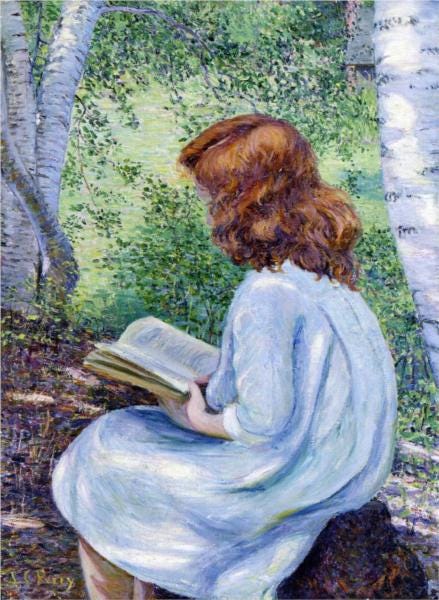
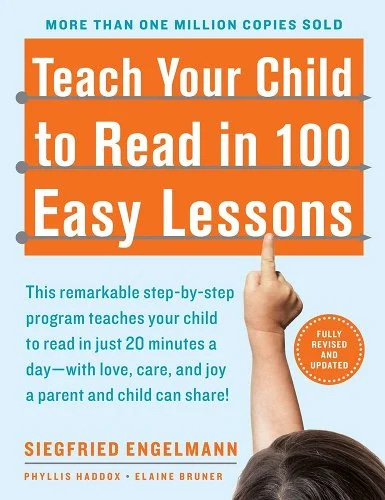
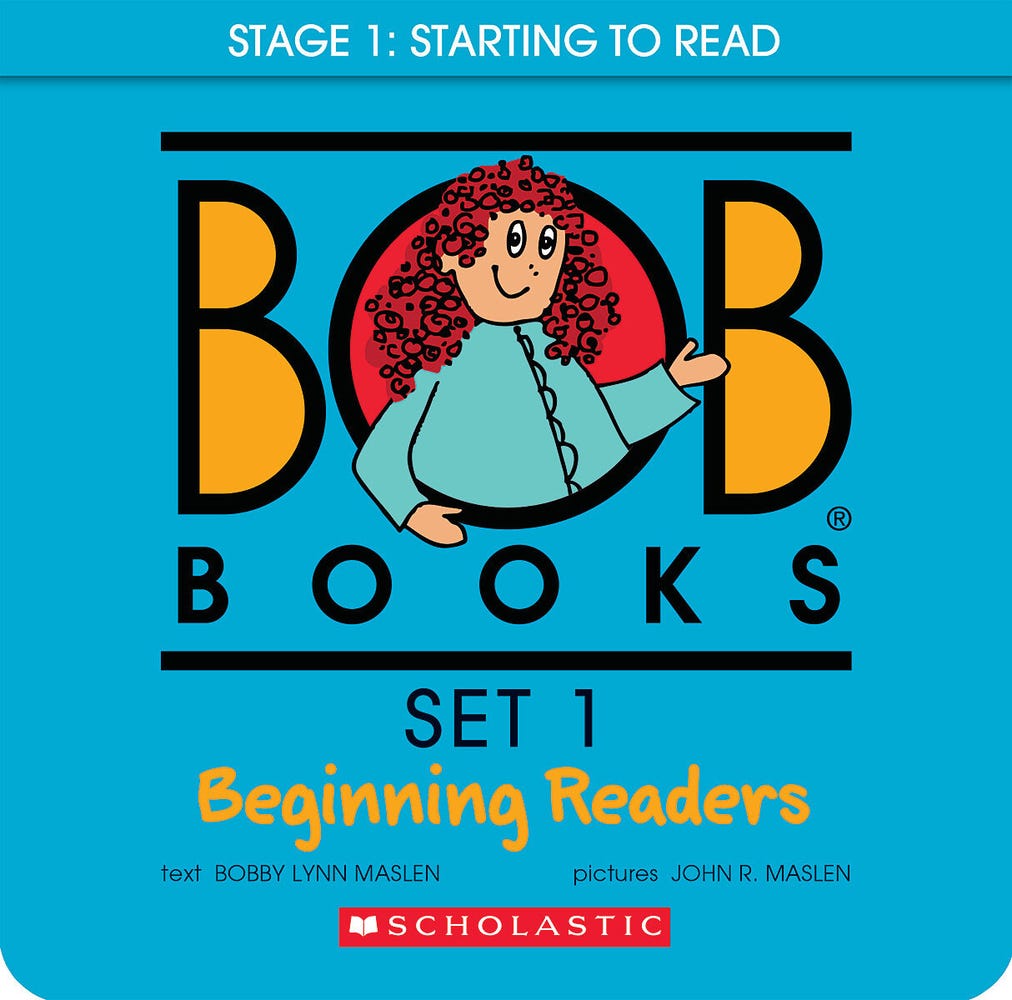
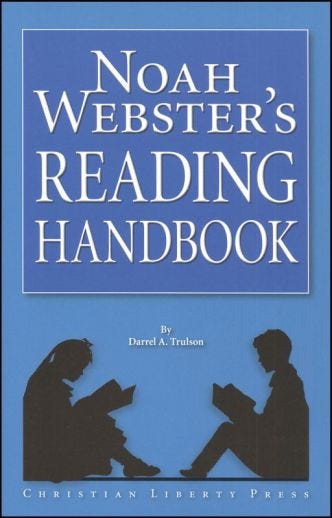
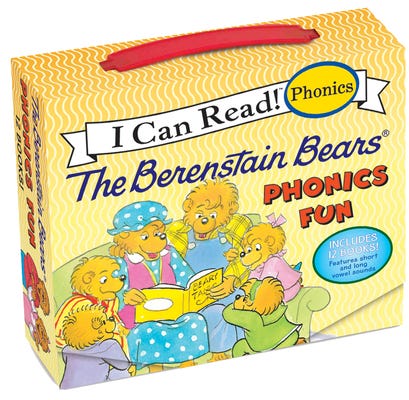
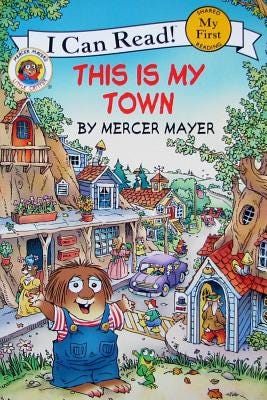
Yes! We have used different curriculum but I absolutely agree with your main points here — time, consistency and low pressure are key. I could not have had a different experience with my first and second learning to read. My first we barely made it through AAR and he just took off — I don’t think I could have stopped him reading if I tried. With my second we had several starts and stops. He was frustrated so we entirely abandoned formal reading for a while (just lots of audiobooks, handwriting, math and outside play), then I just committed to 20 min of phonics several times of week (he really enjoyed the All About Reading app because it was tactile and novel) and then, *finally* sitting in church on Ash Wednesday he looks over at me and says, “Mom, does that sign say, “Behold the Lamb?” Despite the beginning of a penitential season I felt like whooping “Hallelujah!”
He’s now (at 8) reading library books on his own and I think he’ll be just fine. I gave myself a lot of Sarah Mackenzie and Sally Clarkson pep talks, we also did get his eyes checked, but I truly believe kids are just on their own timeline. We’ll see how it goes with my third this year, but I’m fully prepared to table it if it’s frustrating for us.
Our oldest will be 5 at the end of this year, so I'm starting to keep my eyes open to different methods and resources (and pep talks). It helps to know how variable and meandering the process can be, with different personalities and learning styles. I'm noting the eye checkup for future reference, and will put an order for that Noah Webster reader.